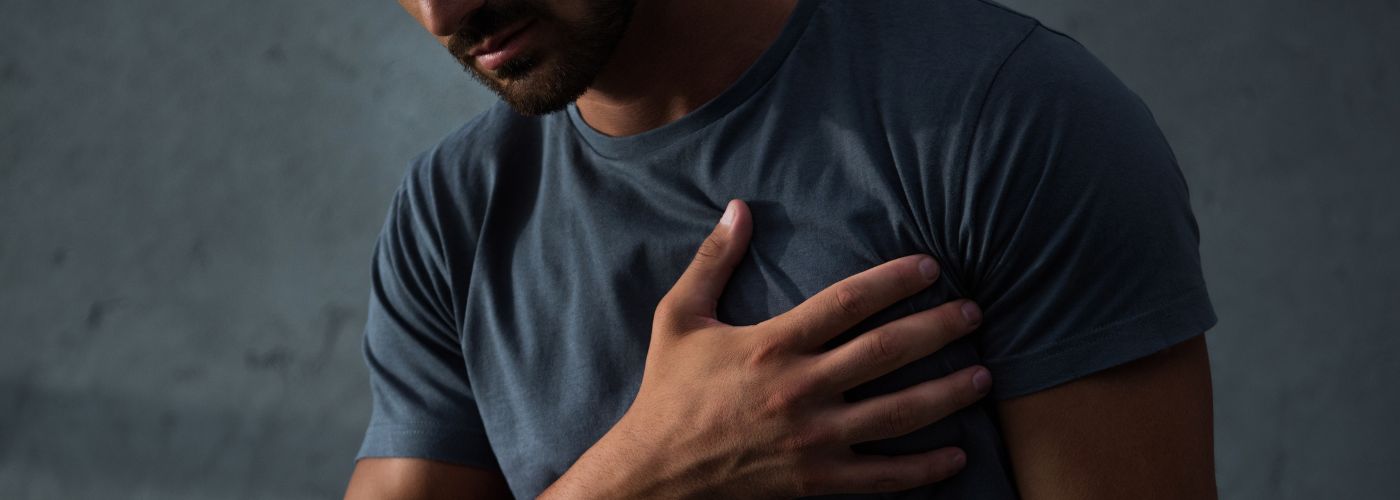Have you ever experienced the post-chest day struggle? The feeling of tightness and soreness seems to linger long after your workout. Don’t sit in discomfort any longer! We’ve gathered a comprehensive guide to chest day recovery!
From tried-and-true recovery methods to innovative tricks that will leave your pecs thanking you, this guide is your ultimate companion on the journey to a speedy and effective chest day recovery.
Planning For Chest Day Soreness & Recovery
When planning for chest day soreness and recovery, it’s crucial to prioritize proper pre- and post-workout habits. Incorporating dynamic warm-up exercises can help prevent injury and reduce muscle soreness.
Additionally, focusing on a variety of chest exercises during your workout can target different muscle fibers for more balanced growth.
Post-workout recovery is just as vital as the workout itself. Utilizing foam rolling techniques can aid in releasing tension in the chest muscles and promoting blood flow for faster recovery.
Taking the time to plan for both soreness prevention strategies and recovery can lead to better results from your chest workouts!
Best Recovery Devices For Chest Soreness
One popular device for easing chest soreness is the TENS unit, which uses electrical impulses to stimulate nerves and reduce pain. This non-invasive method can be effective in targeting specific areas of discomfort in the chest area.
Additionally, using a TENS unit may help improve blood circulation and promote muscle relaxation, offering relief from soreness and tightness.

Another valuable recovery device for chest soreness is the foam roller. This simple yet powerful tool can be used to release tension in the chest muscles through myofascial release techniques.
By applying pressure on targeted areas while rolling back and forth, you can help alleviate stiffness and soreness in the chest region. Integrating this tool into a post-workout routine or daily self-care practice can provide great relief for anyone experiencing discomfort.
How Sleep Impacts Chest Soreness & Recovery
Sleep plays a crucial role in the recovery process of chest soreness, as it allows the muscles to repair and rebuild themselves. During deep sleep stages, growth hormone is released which aids in muscle repair and regeneration.
Lack of quality sleep can hinder this process, leading to prolonged chest soreness and delayed recovery times. Using a TENS unit before bedtime may help alleviate chest soreness by stimulating the muscles and promoting relaxation.
The gentle electrical impulses from the TENS unit may reduce inflammation and improve blood circulation, aiding in faster recovery. Incorporating this technology into your nighttime routine may enhance your sleep quality and overall chest soreness recovery.

Prioritizing restful sleep and utilizing tools like a TENS unit can significantly impact your chest soreness recovery journey. By understanding the importance of quality sleep, you can optimize your body’s healing process and expedite recovery from chest soreness!
Nutritional Guidance For Optimal Muscle Recovery
Macronutrients such as protein, carbohydrates, and fats are essential for replenishing energy stores and aiding in muscle repair. Protein, in particular, is vital for rebuilding muscle tissues that have been broken down during exercise.
Aim to consume high-quality sources of protein like lean meats, fish, eggs, dairy products or plant-based alternatives to support muscle recovery.
Carbohydrates are another important macronutrient for optimal muscle recovery as they provide the necessary energy to fuel workouts and replenish glycogen stores post-exercise. Focus on consuming complex carbohydrates such as whole grains, fruits, and vegetables to sustain energy levels and promote effective recovery.
Additionally, don’t overlook the significance of healthy fats in your diet as they play a role in reducing inflammation and supporting overall bodily function. Including sources of omega-3 fatty acids like fish oil, flaxseeds, and nuts can aid in enhancing muscle healing and promoting overall recovery speed.
If you’re looking to gain weight, then your macronutrients should equal roughly 35% carbohydrates, 30% protein, and 35% fats.
If you’re looking to lose weight, then your macro nutrients should be about .8 times your current body weight. Anyone looking to maintain their weight should get equal about 30% of their daily calories from carbohydrates, 40% from protein, and 30% from fats.
Key Supplements for Supporting Chest Muscle Recovery
One key element often overlooked in muscle recovery is the role of zinc. This vital mineral plays a crucial role in protein synthesis and immune function, making it a critical component for repairing and rebuilding muscle tissue post-workout.
Including zinc-rich foods in your diet such as red meat, shellfish, nuts, and seeds can help support efficient muscle recovery processes. Additionally, taking a zinc supplement may be beneficial for those with increased needs due to intense training or inadequate dietary intake.
By prioritizing adequate zinc intake, individuals can promote faster muscle repair and growth, ultimately leading to improved athletic performance and overall well-being.

Incorporating more zinc-rich foods into your diet while paying attention to overall nutrient intake can make a significant impact on your muscle recovery efforts. Remember that every detail matters when it comes to supporting your body’s ability to bounce back stronger after training sessions.
By giving attention to nutrients like zinc in addition to protein and other key factors, you can optimize your muscle recovery process and achieve peak performance levels in your fitness journey.
Stretching Techniques For Faster Recovery
Stretching is a crucial component of the recovery process, helping to improve flexibility, reduce muscle soreness, and increase blood flow to the muscles.
One effective stretching technique for faster recovery is dynamic stretching, which involves moving through a range of motion without holding the stretch for an extended period. This type of stretching can help to warm up the muscles before a workout or aid in post-exercise recovery by promoting blood flow and flexibility.
Another beneficial stretching technique is myofascial release using foam rollers or massage guns. By targeting specific areas of tightness or trigger points in the muscles, myofascial release can help to improve circulation, reduce muscle tension, and speed up recovery!
Workout Tips To Help Chest Soreness
While it may be tempting to skip a workout when experiencing chest soreness, light exercise can actually help alleviate the discomfort. Engaging in low-impact activities like light chest exercises can increase blood flow to the muscles and promote healing.
Additionally, focusing on proper form and technique during weightlifting exercises can prevent further strain on the chest muscles while still allowing for a productive workout.
For those looking to target their chest specifically, incorporating exercises that utilize different angles and variations can help reduce soreness. Incorporating movements like incline or decline push-ups, cable crossovers, or dumbbell flyes can provide a great chest workout without bothering existing discomfort.
It’s important to listen to your body’s signals and modify your routine as needed to prevent any worsening of soreness!

Related Stories
5 Ways to Support Bone Strength with HiDow
World Osteoporosis Day (October 20) October 20 is World Osteoporosis Day, and chances are, you’ve...
Oct
FDA-Cleared Is a Flex. Here’s Why.
Pulling Back the Curtain You’ve seen it on boxes, on websites, in ads: FDA-cleared. It...
Sep
This Is Fibro. This Is Larry.
September is Pain Awareness Month. And we’re not here to give you medical definitions or...
Sep
Train Your Relaxation Reflex
How often do you find yourself struggling to switch off after a long day? With...
Aug
Back To School Fitness: Balancing Academics & Athletics
Most student athletes don’t have a motivation problem. They show up. They train hard. They...
Aug
How to Cope with a Sports Injury
Staying active helps your body stay strong. But sometimes, activity leads to pain, strain, or...
Jul